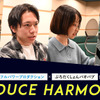American Anime Fans and “100% Authenticity”
Years ago I briefly dated a Japanese-American otaku girl who very sincerely asked me, “Dave, am I Japanese enough for you?” The question was
English
news
-

「ツイステ展」見どころ公開!オンボロ寮の再現&限定イベの衣装展示に、“オバブロ”アクスタほかオリジナルグッズも
-

Cowboy Bebop and The Phrase “Why Don't They Make More Like...”
-

“声優になる”本気度に火が付く! 声優育成プロジェクト「Produce Harmony」レッスン生に直撃インタビュー【PR】
By David Cabrera
#23: American Anime Fans and “100% Authenticity”
After last week's talk of censorship and fans in search of “the real thing”, let's start today's column with the most awkward story that's ever happened to me in my otaku life.
Years ago I briefly dated a Japanese-American otaku girl who very sincerely asked me, “Dave, am I Japanese enough for you?” The question was so surreal that it stopped me in my tracks.
I'm Puerto Rican. I've lived in New York all my life. I haven't even vacationed in Japan. I'm just a huge nerd for games, anime and manga. And somehow my life had led me to a Japanese girl asking me-- why was I the authority? what did I know about anything?-- about whether or not I measured up to some imaginary standard of a Japanese woman that I'd built in up my head solely from watching anime!
First I was sad for her, then a little insulted, then sad for her again, and I told her that how I felt about her had nothing to do with where she came from. She was surprised at this. “I just thought you might prefer a homegrown girl...”
Because many American anime fans do indeed prefer homegrown. After all, we specifically separate Japanese animation and comics from the rest of the world's because we think there's something special about them. That line of thought often... extends to other places.
But that takes us to other stories. Let's just talk about “homegrown.” Many of us anime fans are purists. There are a lot of excellent English dubs out there, but I don't often watch them. I have nothing against the practice or the performers, but if I'm watching something foreign, I want subtitles. I don't insist upon a completely literal translation-- though many fans do, to an absurd degree-- but I do want to be as close to the original work as is possible.
Again, recall the previous entries about censored anime on TV and how upset fans were about what had happened to Sailor Moon and Dragon Ball. This is a culture that cares deeply about the authenticity of the work, and part of that is because they feel it's been threatened in the past.
A lot of people who've sold anime and manga in the US have taken advantage of this mindset. Tokyopop started a manga boom in American bookstores by way of two key strategies. First, they brought manga down to a cheap $10 price point (relatively cheap: manga costs a lot more here than it does in Japan). Second, they printed the books right-to-left as originally published and stamped the words “100% Authentic Manga” on the back.
Previously to this, it was standard practice to reverse the art in manga so that you'd have a typical left-to-right book. Fans weren't fond of this because it messed with the art, and Tokyopop wasn't fond of this because it was costly. So in one clever move, Tokyopop cut costs (and boy, were their books cheaply, shoddily produced) and also capitalized on the American otaku desire for an “authentic” product as close to the Japanese as possible. The entire US manga industry followed suit, and today there are extremely few left-to-right (“flipped”) English versions of manga.
Fans aren't people who are willing to settle for less than “the real thing”: or at least what they believe the real thing is. There are endless examples of this in action with US anime/manga, but we're out of room here. See you next time.



